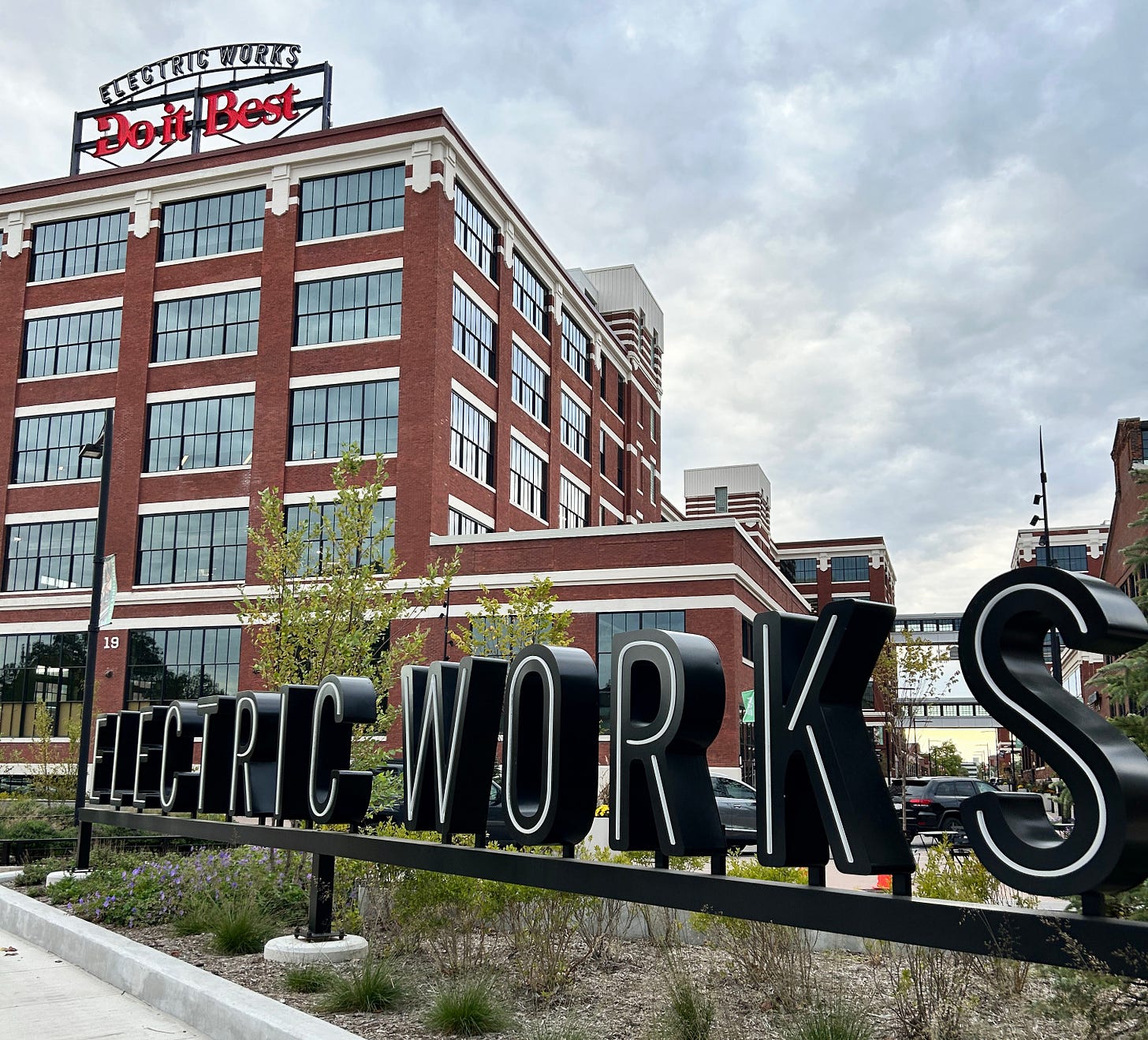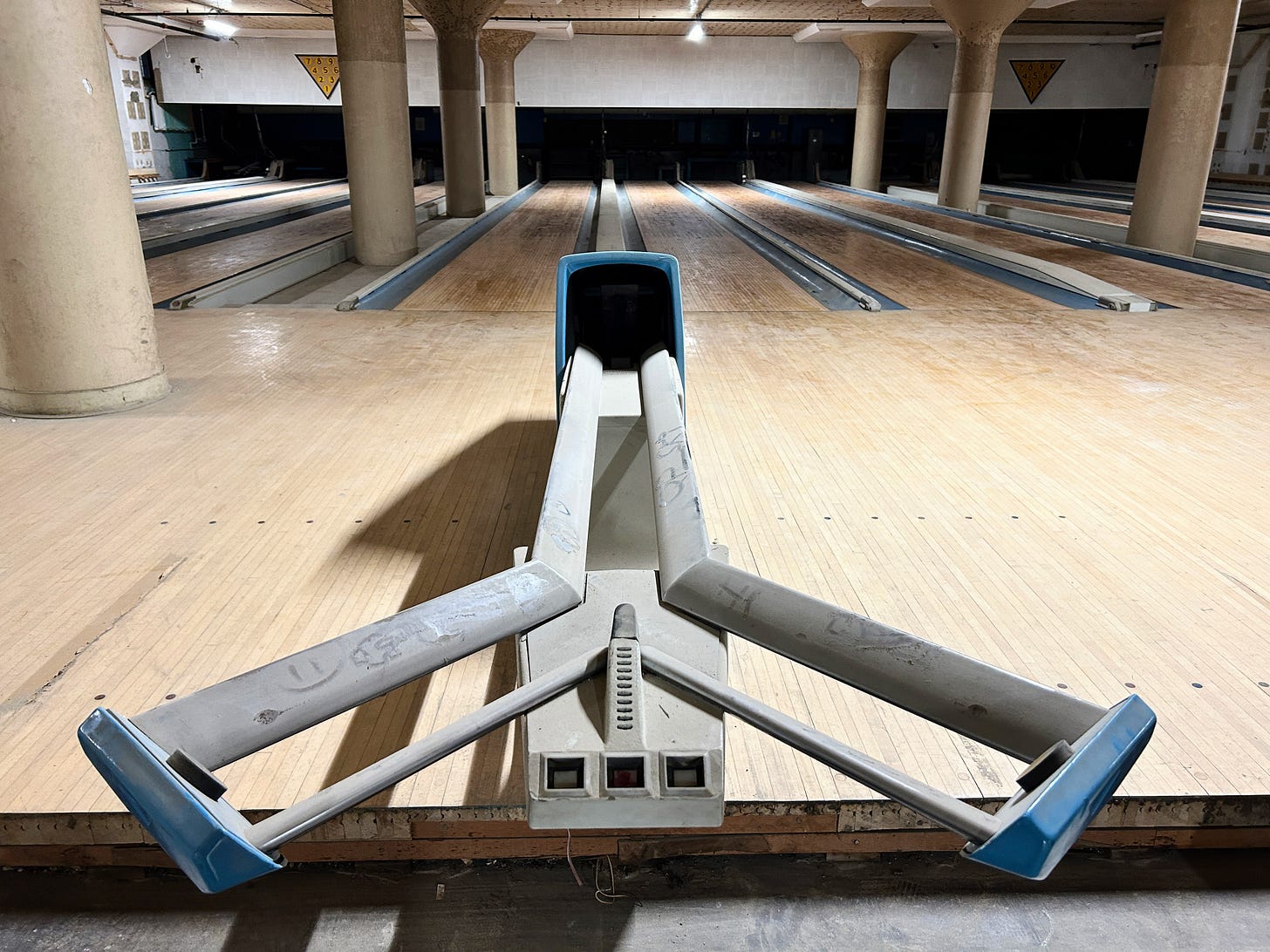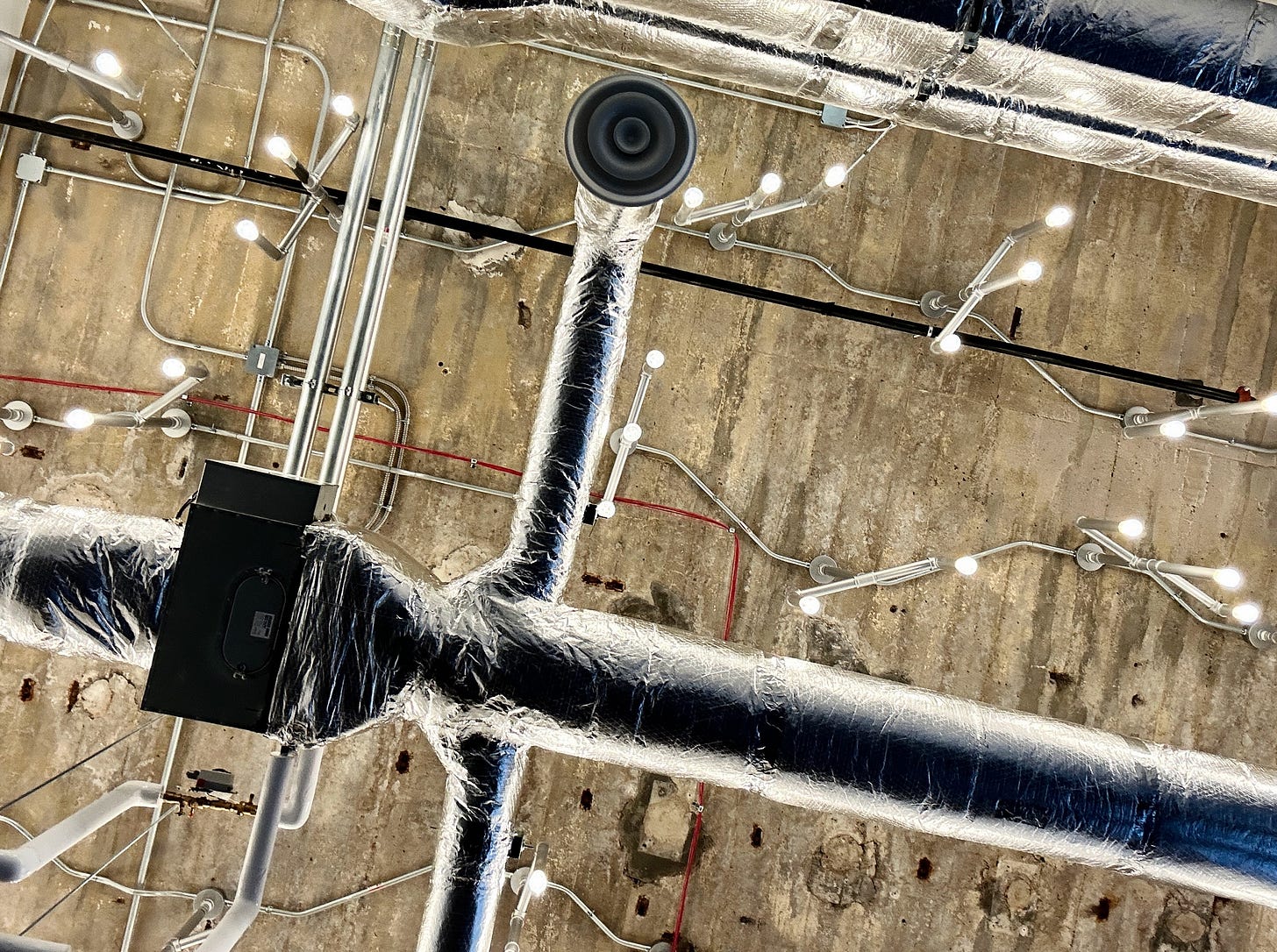Who built the moontowers?
Fort Wayne’s once-crumbling General Electric plant, which built hundreds of moonlight towers in the late 1800s, including Austin’s, is being saved from the rubble.

If you’ve lived in Austin for long, you’ve probably stood in awe of a moontower at least once.
These 165-foot-tall tower lights aren’t quite as iconic as the bats that live under the Congress Avenue bridge, but here’s the case for why they should be. More than a dozen of these still-standing moontowers, as we call them, date back to 1894, when the city wanted to find a way to bring light to the quickly growing capital.
Ten years earlier, the town that had been rattled by the so-called servant girl murders, and as it faced a new century, Austin was on the cusp of electrification from the construction of a dam on the Colorado River.
I love telling newcomers about the moontowers because nobody can believe they were installed nearly 130 years ago. Of the 31 original towners, between 13 and 17 are still standing today, with several under repair at any given time. Immortalized by the 1993 movie “Dazed and Confused,” where one of the scenes takes place at a “party at the moontower,” these towering lights are on the National Register of Historic Places and are the only working examples of this kind of street lighting anywhere in the world.

But this year, I learned something new about them: Austin’s moontowers were built at a massive electric works facility in Fort Wayne, Indiana that is in the midst of a once-a-century renovation that will keep nearly 20 historic brick buildings from crumbling into oblivion and preserve an important piece of American technological history.
Fort Wayne isn’t known for much outside Indiana, but it is working hard to change that. The second-largest city in the state has a population of about 300,000. Once known only for its industrial contributions to the country (thus, the moontowers), it is now a creative hub between Chicago and Detroit whose downtown has been undergoing a revitalization for the past decade to include an art museum, ballet company and dining district. The city is also home to Sweetwater, an internationally renowned online (and brick-and-mortar) music store and recording studio with more than 3,000 employees, half of whom are musicians. (Can you imagine if Austin had a single company that employed 1,500 musicians?)
For eighty years, the dominant employer in Fort Wayne was General Electric, whose 39-acre campus employed a third of the working population in Fort Wayne at one point.

But back in the 1880s, the electric company was much smaller, and it was operated by a man named James A. Jenney, who invented the arc light that was on top of those original moontowers. In June of 1883, Jenney installed a ring of those lights around a baseball field in Fort Wayne and advertised the country’s first night baseball game. Some 2,000 people attended the event, which is considered the first public display of the technology even though the lights all burned out before the end of the game. A year later, Jenney’s arc lights were used at the New Orleans World’s Fair and then, in 1885, they were the first to illuminate the Statue of Liberty. Detroit had more than 100 of these moonlight towers in the 1880s and 1890s, but Austin was the only city to preserve them.

In 1888, the Jenney Electric Company became the Fort Wayne Electric Light Co., which is the company that sold the towers to Austin in 1894. A few years later, that company would be acquired by Thomas Edison’s General Electric Co., and in the following decades, GE’s Fort Wayne campus became an epicenter of electrical engineering for electric motors, transformers, superchargers for military aircraft and the parts needed to make household appliances. (The first ice-making machine — a predecessor to the household refrigerator — and the garbage disposal were both invented there.)

At its peak in 1944, the city-within-a-city employed more than 20,000 people. It had its own bowling alley and gymnasium and even its own newspaper and basketball league, but by the 1970s, the once bustling campus was starting to slow down. GE didn’t officially close the site until 2015, but by then, many of the enormous (and now empty) industrial brick buildings had become an eyesore.
But in 2017, a group of investors acquired the property and began a long-term nearly $300 million development project called Electric Works to transform more than 1.2 million square feet of space in the heart of Fort Wayne. Last year, the first of 18 renovated buildings reopened with offices, a food hall and a community gathering space, which we toured as part of the visit.

There, we found out that Do it Best Corp., Indiana’s largest private company, will be headquartered at the site, and Indiana Tech and Indiana University plan to be part of a burgeoning innovation and research center. The campus will also house a STEAM high school and a health clinic. The old bowling alley and gymnasium will be part of a new community and event center that will once again bring Fort Wayne residents to this historic site.
I didn’t know about the moontower connection until I got back to Austin and was telling somebody I’d just met about the moontowers. There it was, “Fort Wayne Electric Co.” front and center on the Wikipedia page.
All of the sudden, the Austin and Fort Wayne connection became clear. (And the Electric Works revitalization project makes Austin’s Seaholm Power Plant look like a game of marbles.)
When you consider that Austin’s moontowers represent a fraction of what came from Fort Wayne’s electric works, it makes you pause to reflect on the total contribution that a place like that has had on both the American economy and American culture at large.

I mean, where would we be without the ice maker and the garbage disposal?
Austin’s moontowers were repaired in the early 1990s so they’ll last another 100 years, and the lights on top have long since been replaced with more modern bulbs – LED lights, according to Austin Energy. But these towers are more than the sum of their parts. They are a nightly reminder of our connection to the past and to places like Fort Wayne that played an integral part in making Austin what it is today.
It’s wonderful to see investors do for the old General Electric campus in Fort Wayne what Austin did for the moontowers thirty years ago and what investors did a decade ago for our own downtown power plant, which now houses a Trader Joes, a few restaurants, several hundred apartments and a soon-to-open event center.
Every city has a past that’s worth bringing into the future.
Sometimes, that’s preserving the lights.
Sometimes, it’s preserving the places that make that light possible.
Happy almost December, friends.
The title of this week’s newsletter is an homage to the great Shinyribs’ song “Who Built The Moon?” that has been immortalized in a new children’s book and a really cool piece of art whose profits benefit the SIMS Foundation.
Shinyribs’ founder Kevin Russell is an old friend who I’m excited to see at ACL Live at the Moody Theater downtown just after Christmas. If you don’t know his work, I hope you’ll check it out.
Austinites know that the most famous moontower these days is the one at Zilker Park, which every December transforms into the city’s largest Christmas tree with more than 3,000 multi-colored bulbs. This is the 57th year that Austin Energy workers have decked out the155-foot-tall moontower into a holiday tree that is 120-feet in diameter at the bottom, according to the city.
It’s an Austin tradition to take a spin under all those lights. My recommendation is to avoid the Trail of Lights crowds if you can. I’ve had the best luck going on Christmas Eve, when everyone is cozied up at home and the parking lot is nearly empty. The tree is free and open to the public every night until Jan. 1.
Oh, and that moontowner scene from “Dazed and Confused”? It was filmed at Walter E. Long Park in East Austin with a replica moontower. I don’t really love that movie — too much hazing — but I can appreciate what it has done to iconize pieces of Austin culture. Like those marvelous moontowers.
I’m headed to Missouri this week to see my mom before the holidays, where I’ll be putting the finishing touches on the upcoming zine. Thank you to all the subscribers who make that project possible!
And don’t forget that tonight, I’m co-hosting a Substack meet-up at Mort Subite downtown at 6 p.m. If you’ve ever been interested in starting a Substack or want to know more about newsletters, join us!
Addie





I grew up in Detroit, and we would take the train to Fort Worth...I must have seen these buildings myself. Fun and interesting article!
And on another matter: "whose 39-acre campus employed a third of the working population in Fort Wayne"...this common reference to "working" people obscures and diminishes the UNPAID work of (mostly) women. Is there another way we can refer to workers that acknowledges the non-remunerated work that enables and accompanies the compensated work? For too long we have ignored the contributions of caregivers and homemakers (including especially the fact that this work is not counted in the GDP). I dunno, would it be better to say "whose 39-acre campus employed a third of the paid working population in Fort Wayne."?